Cross Lateralization

HOW IS THIS RELEVANT TO THE CLASSROOM?

The cerebellum and the prefrontal cortex are connected. If the cerebellum is off, then cognitive function suffers. Cerebellar exercises that cross the midline enlist more parts of the brain for well-developed attention systems. (Budde, 2008)
The body has corresponding midlines going top to bottom and left to right. Crossing the midlines integrates the brain hemispheres, organizes the brain, allows information to flow freely, and research suggests even acts to prepare the brain for learning!
CROSSING THE MIDLINE MEANS SUCCESSFUL COMMUNICATION BETWEEN BOTH SIDES OF OUR BRAIN
 Successful integration between the two sides of the brain is necessary for improving all brain processes including those for reading, writing, academic achievement, motor skills development, and all other higher order cognitive processes. When we perform activities that cross the midline of our body, these movements are helping build pathways in the brain that are extremely important for various skills such as gross motor, fine motor and cognitive skills.
Successful integration between the two sides of the brain is necessary for improving all brain processes including those for reading, writing, academic achievement, motor skills development, and all other higher order cognitive processes. When we perform activities that cross the midline of our body, these movements are helping build pathways in the brain that are extremely important for various skills such as gross motor, fine motor and cognitive skills.

IDENTIFYING GAPS
- For the student, a lack of midline crossing may indicate that the left and right sides of the brain (the left and right hemispheres) are not communicating well together.
- The inability to cross midline may be disruptive to a child’s capability to develop a dominant hand, perform handwriting and can cause delays in their educational advancement. (Giroux, Woodall, Weber, & Bailey, 2012)
_____________________________________________________________________________

In order to perform daily tasks, both sides of our brain and body are required. This includes everyday activities from putting on shoes and socks to writing and reading. The coordination and communication between the left and right hemispheres of the brain are critical milestones in development.
_________________________________________________________________________________
The good news is, when we practice crossing the midline, we are can fill in the missing stages and strengthen these components necessary for learning success. Here are some recommended ABL teaching tools for strengthening cross laterization skills
The Cross Lateralization Station focuses on Crossing the Midline and allows for a variety of progressions students can do as they strengthen this critical foundation to learning!

Students transition between 3 locomotor patterns including heel to toe, grapevine, and cross over - student is actively engaging in low level balance challenges and cross lateralization activities.
____________________________________________________________


